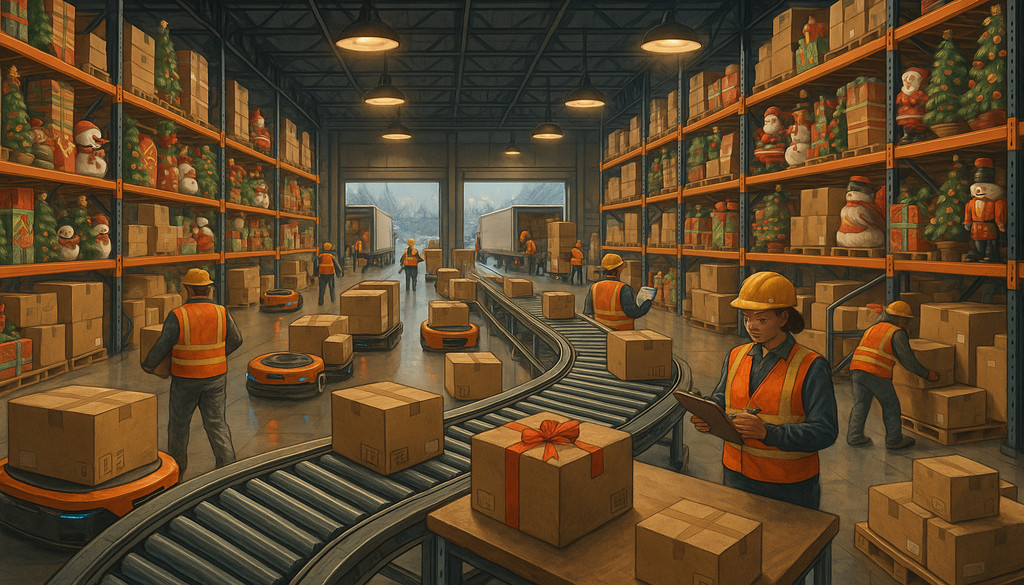Warehouse operations are the backbone of any product-based business, and if you’re feeling the pressure to optimize, you’re not alone. Every second counts when it comes to fulfilling customer orders, and inefficiencies in your pick and pack process can mean the difference between satisfied customers and a flood of complaints. From inaccurate orders to delayed shipments, there’s a lot that can go wrong—but also a lot you can do to get it right.
In this guide, we’ll zero in on the most common pain points businesses face in the pick and pack process, offering practical solutions and strategies to help you overcome these challenges.
Understanding the Picking and Packing Process
Do you find your staff spending more time searching for products than actually packing them? Are order mistakes a common occurrence? These are just some of the headaches businesses face when their picking and packing process is disorganized.
The core of this process involves:
- Receiving Orders: Orders come in, and your team jumps into action.
- Picking Products: This is where problems often arise—finding the right product in a sea of inventory.
- Packing: This step seems simple, but if you don’t have the right materials or system, it can slow everything down.
- Shipping: Delays or mistakes here, and suddenly you’re dealing with unhappy customers.
When any of these steps go wrong, it leads to wasted time, lost revenue, and frustrated customers. But with the right strategies, you can turn these challenges into strengths.
Picking Methods and Strategies: Which One Solves Your Problems?
Is your warehouse layout costing you time and money? The wrong picking strategy can result in excessive travel time, chaotic order fulfillment, and frustrated employees.
1. Batch Picking
If you frequently deal with slow, manual picking processes, batch picking can be an excellent solution. Instead of picking one order at a time, workers pick multiple orders at once. This saves time but also requires sorting later—so it’s a trade-off.
2. Zone Picking
Do your workers spend too much time walking between aisles? Zone picking could be the solution. Workers are assigned specific areas, and only pick from that zone. It cuts down travel time, but requires strong coordination between zones.
3. Wave Picking
If your team is struggling to balance workloads, wave picking may help. By grouping orders into waves based on specific criteria (e.g., shipping deadlines), workers can pick items across zones simultaneously, smoothing out workflows and preventing bottlenecks.
The right method depends on your specific pain points. A poorly chosen strategy can worsen existing problems, so test what works for your layout and team size.
Warehouse Management and Layout: Avoiding Chaos
When your warehouse layout isn’t optimized, your team ends up crisscrossing the floor, wasting valuable time. Does it feel like your team spends more time walking than working? A well-planned layout can minimize these inefficiencies.
Fixing Your Layout:
- Hot Zones for Fast-Movers: Are your most popular products far from the packing station? Store fast-moving items close to the packing area to cut down on picking time.
- Organized Inventory: Does your warehouse have cluttered or confusing aisles? Clear, well-labeled storage can drastically reduce search time.
- Minimizing Dead Space: Are there underused areas in your warehouse? Make sure every square foot is working for you by rotating inventory regularly and storing less frequently used items further from the main flow.
Without an efficient layout, even the best picking strategy won’t save you. Organize your space, and you’ll see a dramatic improvement in how smoothly your pick and pack process runs.
Why a Warehouse Management System (WMS) Is a Major Advantage
Do you find that errors pile up during busy seasons? Is inventory accuracy a constant struggle? Manual processes often lead to missed items, overstocking, or even sending the wrong product altogether.
A Warehouse Management System (WMS) can solve these pain points by:
- Reducing Human Error: Tired of dealing with returns from incorrect orders? A WMS minimizes mistakes by automating the picking process and ensuring real-time inventory tracking.
- Boosting Efficiency: Does your team struggle to find items or double-check inventory? A WMS offers real-time visibility into stock levels and order statuses, cutting down on delays and errors.
- Cutting Costs: Spending too much time fixing picking mistakes? By reducing errors and improving accuracy, a WMS saves both time and money.
A cloud-based WMS like SphereWMS gives you flexibility and scalability, allowing you to adapt to growing demand without a massive upfront investment.
Optimizing the Picking Process
If you’re still relying on paper-based picking lists or having workers memorize stock locations, you’re setting yourself up for problems. The most common issues include picking mistakes and wasted time spent searching for products.
Key Solutions:
- Barcode Scanning & RFID: Do picking mistakes keep happening? Using barcodes or RFID technology ensures accurate picking, reducing human error.
- Pick-to-Light Systems: Is it taking too long to pick items? This technology lights up the correct items, speeding up the process and reducing mistakes. It’s ideal if your workers often pick the wrong item or quantity.
These tools not only improve picking accuracy, but they also speed up your operations, meaning you can fulfill orders faster and with fewer mistakes.
Packing Best Practices to Save You Headaches
Packing may seem like the easy part of the process, but it’s often where mistakes happen. Are you using the wrong-sized boxes or forgetting essential items in the package? These errors can lead to expensive returns and customer dissatisfaction.
Best Practices to Avoid Common Packing Pitfalls:
- Right-Sized Boxes: Are you wasting money on oversized packaging? Using appropriately sized boxes cuts down on shipping costs and reduces the risk of damage in transit.
- Quality Packing Materials: Are you receiving complaints about damaged products? Invest in quality materials like bubble wrap or air cushions to protect items during shipping.
- Packing Slips: Missing products? Include detailed packing slips to verify that everything has been correctly packed.
Integrating packing workflows into your WMS ensures that everything is accounted for and correctly packaged before it leaves the warehouse.
Shipping and Fulfillment: Avoiding Delays and Errors
Your team did all the hard work picking and packing, but if the shipping process breaks down, none of that matters. Are customers constantly complaining about late or lost shipments? Delayed or inaccurate shipping can undo all your previous efforts.
Solving Shipping Problems:
- Choose Reliable Carriers: Are you losing track of packages? Work with carriers that offer real-time tracking to keep customers updated on their order’s location.
- Same-Day Fulfillment: Can’t keep up with demand? For time-sensitive products, using fulfillment centers or 3PLs that offer same-day shipping can give you a competitive edge.
A WMS can also integrate with your shipping partners, automating label generation and updating shipment status in real-time.
Outsourcing and Automation: When to Make the Move
Is your team overwhelmed with the volume of orders? Struggling to maintain accuracy while keeping up with growth? Outsourcing or automating some parts of the process can help you avoid burnout while improving efficiency.
Consider Outsourcing if:
- You lack the internal resources to manage order spikes.
- You want to focus on scaling your business rather than fulfillment.
Automate if:
- You’re looking to speed up repetitive tasks (like picking or packing).
- You want to reduce labor costs and human error.
Tools like robotic pickers or conveyor belts can drastically cut down on fulfillment times, making your operation more efficient while reducing strain on your team.
Conclusion: Turning Your Pain Points Into Strengths
Every warehouse faces its own challenges, but by identifying your pain points and implementing the right strategies, you can transform your pick and pack operations into a competitive advantage.
With a combination of efficient picking strategies, smart packing practices, and the power of a WMS like SphereWMS, you can reduce errors, speed up processes, and keep your customers happy. Optimization isn’t just about saving time—it’s about improving your bottom line and ensuring future growth.










